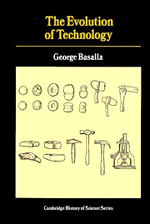Book contents
- Frontmatter
- Contents
- Preface
- I Diversity, Necessity, and Evolution
- II Continuity and Discontinuity
- III Novelty (1): Psychological and Intellectual Factors
- IV Novelty (2): Socioeconomic and Cultural Factors
- V Selection (1): Economic and Military Factors
- VI Selection (2): Social and Cultural Factors
- VII Conclusion: Evolution and Progress
- Bibliography
- Sources of Quotations
- Index
III - Novelty (1): Psychological and Intellectual Factors
Published online by Cambridge University Press: 05 August 2014
- Frontmatter
- Contents
- Preface
- I Diversity, Necessity, and Evolution
- II Continuity and Discontinuity
- III Novelty (1): Psychological and Intellectual Factors
- IV Novelty (2): Socioeconomic and Cultural Factors
- V Selection (1): Economic and Military Factors
- VI Selection (2): Social and Cultural Factors
- VII Conclusion: Evolution and Progress
- Bibliography
- Sources of Quotations
- Index
Summary
Introduction
The diversity that characterizes the material objects of any culture is proof that novelty is to be found wherever there are human beings. If this were not the case, strict imitation would be the rule, and every newly made thing would be an exact replica of some existing artifact. In such a world technology would not evolve; the range of material goods would be limited to the first few naturfacts used by the earliest men and women.
If we accept the proposition of universal artifactual diversity, we must acknowledge that a greater variety of artifacts is available in some cultures than in others. At one extreme there is the United States that currently issues about seventy thousand patents annually and at the other extreme are the Australian aborigines or the native inhabitants of the Amazon basin whose meager stores of tools and utensils have changed very slowly over many centuries.
How can we account for differences in the rate of production of new kinds of things? And how can we identify the sources of novelty in any culture? Answering these questions is no small task. The study of innovation is filled with confusing and contradictory data, theories, and speculations. Because there is no consensus on how novelty emerges in the modern Western world, we cannot expect to find reliable guidelines to an understanding of innovative activity in our own past, let alone in the histories of cultures radically different from ours.
- Type
- Chapter
- Information
- The Evolution of Technology , pp. 64 - 102Publisher: Cambridge University PressPrint publication year: 1989



